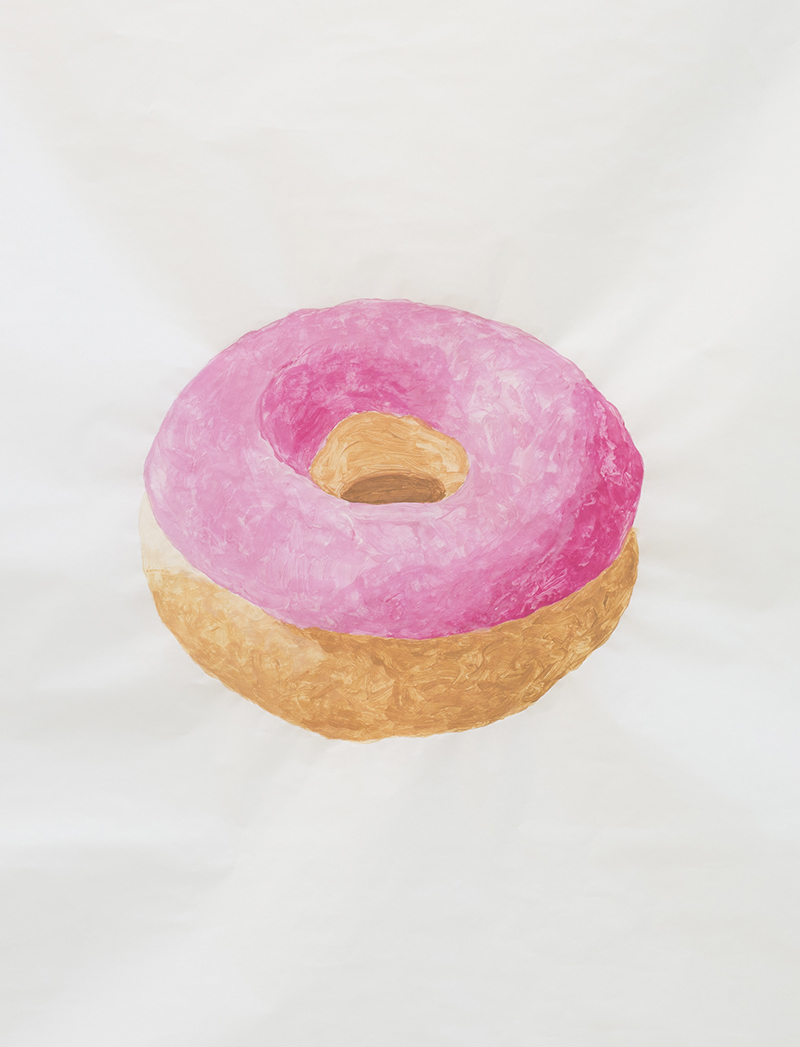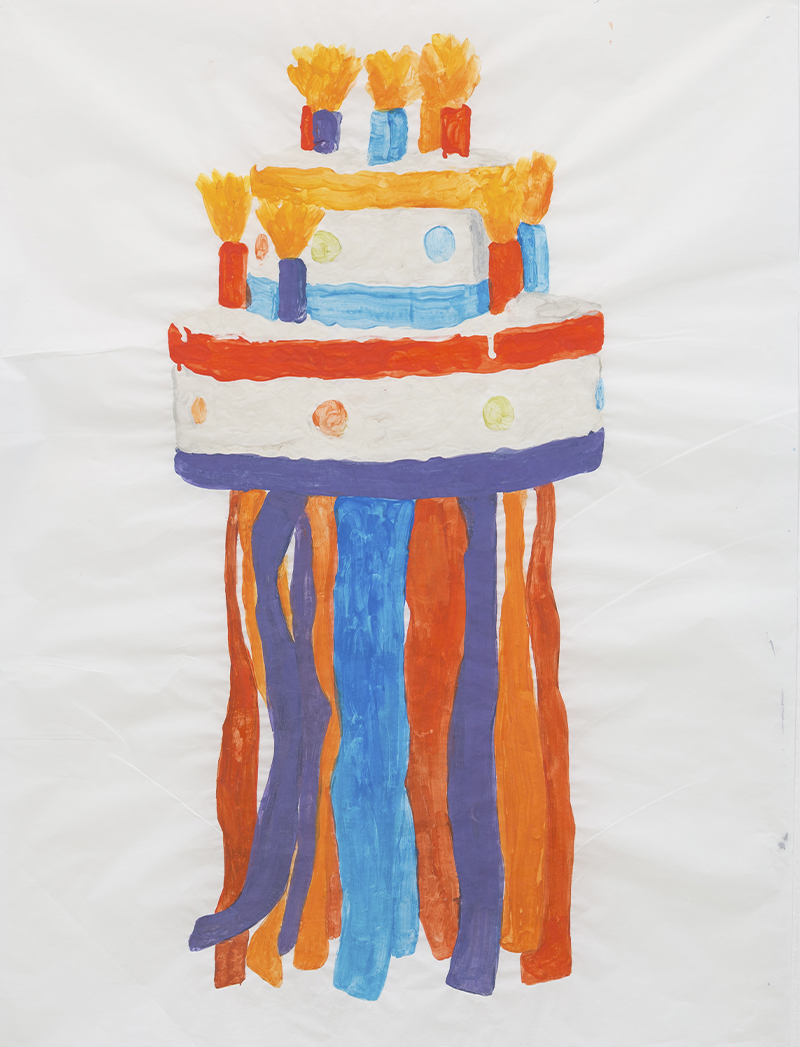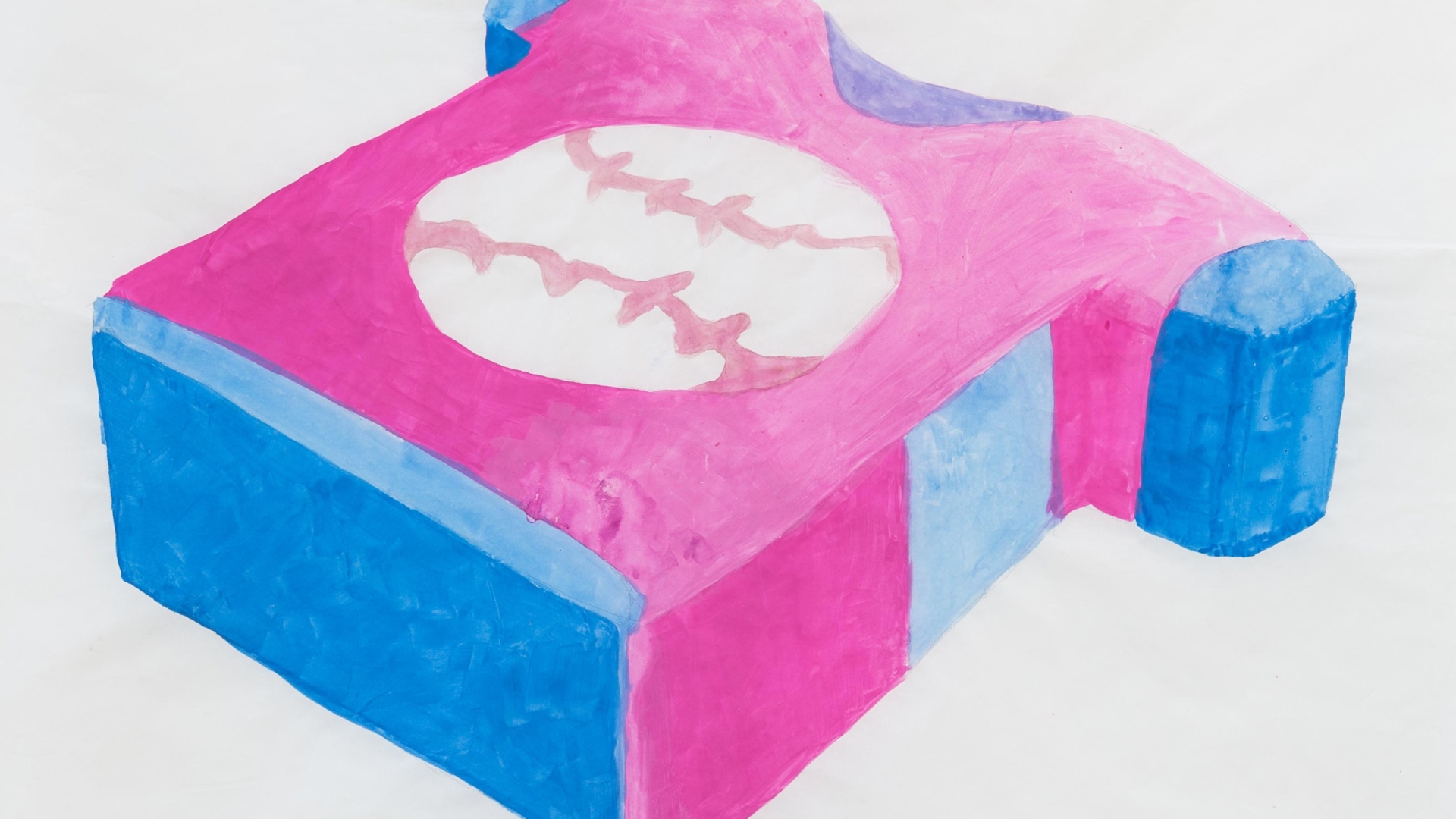‘Rubber, Doughnut and Piñata’ by Eugénia Mussa
I was born in Mozambique and it was there that I spent the first five years of my life, during a civil war – a war which was secondary in the context of the Cold War. It was the 1980s and I spent these early years with the sensation that the rest of the world exploded in colour, while I inhabited a grey corner. The shop windows in the city of Maputo were always empty and people formed long queues to acquire basic goods. It was only thanks to books, magazines and the few times I was able to watch television that I knew that colourful objects existed, but in a distant reality. Nothing impressed me more than cakes with various neon-coloured layers and anything with the colour pink.
These five years are split into two very different parts and this harsh context corresponds only to the second, but it was what led me to drawing at an early age. It was not like I had a choice: an only child, I spent the days alone in a gigantic house without a television. This house, situated in the Polana neighbourhood, was huge compared to the previous one (part 1), my grandparents’ house, in the peripheral neighbourhood of Matola, which was small and welcoming.

In 1983, due to the unfavourable circumstances, I moved to Portugal, but I returned to Mozambique often during the summer break, exchanging the Portuguese summer for the Mozambican ‘winter’. It was during one of these visits that, at the age of thirteen, I contracted malaria. Following a trip to Pemba, the land of my paternal grandparents – and also where there is a greater incidence of the disease – shortly after arriving in Maputo I was diagnosed with falciparum malaria, its most dangerous form.
The objects represented here are the result of these two periods of my life. When I contracted malaria, I spent about a week in an almost constant state of delirium; the boundary between dreaming and reality blurred. But with malaria there are no dreams, only nightmares, and one of them, the most frightening, was also the most enigmatic, the oldest and the one I had most frequently. Until I became sick, I had managed to avoid trying to understand what actually made this dream so frightening, but when the dream becomes physical, you have to give in. When I did, I finally realised that it was all a question of scale.

In Woody Allen’s futuristic comedy Sleeper (1973), at some point the heroes come across a farm in which everything is gigantic; the vegetables are the size of a car, the chicken is over three metres tall… Only there was nothing funny about the version projected in my mind and I had the terrifying physical sensation of a sudden transformation in scale; materials/objects were the size and weight of planets
Many years later I became a painter and one day, accidentally, I began to work with tracing paper, the perfect material for dreamt objects.
The objects Rubber, Doughnut and Piñata represent my dream and its scale, the nightmare.

